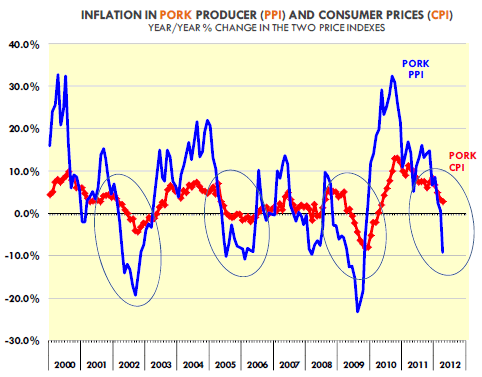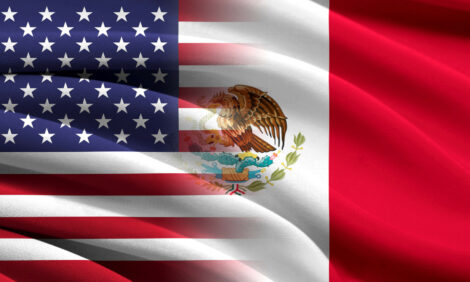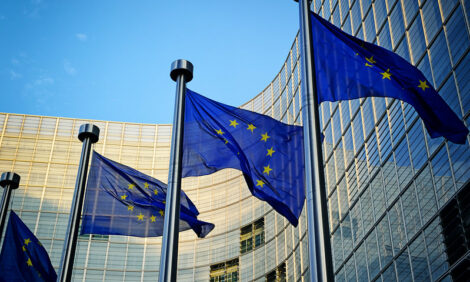



CME: Lower Pork Prices Needed for Volume Movement
US - One of the arguments for the continued weakness in the pork market has been that prices at the consumer level have not adjusted quickly enough to clear the market, write Steve Meyer and Len Steiner.While
export shipments have been strong, at least through Q1, lower
prices have been needed to stimulate volume movement. More
recently, however, the conversation among market participants
has focused on the willingness of domestic retailers to lower prices
in order to clear the perceived supply backlog.
Stickiness of
retail prices, or price rigidity, is an old subject in economics.
Retailers and foodservice operators are reluctant to change prices
often, both because of how they perceive consumer responses
to such changes but also because of the costs inherent in changing
prices often.
Prices tend to be more sticky at the foodservice
level. This is understandable considering the expense in changing
menus, revising in-store promos as well as the long term established
marketing calendars that are tied to advertising campaigns.
Large foodservice chains provide exceptional efficiencies
of scale but they also have significant bureaucracies that make
quick price changes difficult to implement.
Retailers tend to be
more nimble in making price changes but even there price stickiness
persists. Retailers are wary of confusing the consumer and
want to see if lower or higher prices will persist before making a
change. This happens both when prices move up as well as they
move lower.
The chart to the right compares price inflation for pork
at both the wholesale (PPI Index) and consumer level (CPI Index).
The Bureau of Labor Statistics issued yesterday its latest
PPI reading, which showed that the pork PPI index in April declined
10.7 per cent from the prior month.

To fully appreciate the extent
of the price decline in April, consider that this is the largest
month / month change in the PPI index since at least 1990, surpassing
even the monthly price changes in the summer and winter
of 1998. The pork PPI index was down 9.2 per cent from the previous
year. As the chart shows, we have seen larger year/year retractions
and the extent of the recent pullback still is smaller
than what we observed in 2009.
What the chart also shows is
that the decline in pork prices at the consumer level, as expected,
tends to lag declines in producer prices. The magnitude of the
price swings at the consumer level is smaller since raw material
is only part of the costs that retailers face. Also retailers use
their margins as shock absorbers to smooth out the much more
volatile raw material price changes.
The CPI data for April was
released a few minutes ago and it showed that the pork CPI index was 2.8 per cent higher compared to a year ago. Pork price
inflation at the retail level has subsided in recent months, coincident
with the pullback in wholesale values. Indeed, counter to
perceptions in the marketplace, inflation in consumer prices is in
line with what we have seen in prior years.
The pork CPI should
be adjusting further in the coming months and likely turn negative
this summer. The most recent evidence of rapid disinflation
in pork prices was in the fall and winter of 2008/09. At that time,
prices at the retail level lagged the pullback in wholesale prices
by about 4 months. In other periods the adjustment was quicker,
depending on the magnitude of the decline in the PPI.
Consumer price inflation for other proteins has outpaced
pork. The consumer price index for beef and veal was pegged at
261.127 (index value 1982-84 = 100), 5.9 per cent higher than a year
ago. The index for chicken parts (this includes breast meat, leg
quarters, wings, etc) was quoted at 209.923, 4 per cent higher than a
year ago. The overall food CPI in April was pegged at 233.15,
3.15 per cent higher than a year ago. Food price inflation in the US
accelerated last year, peaking at a year/year rate of 4.71 per cent last
December. Food price inflation has eased since then and it currently
is tracking moderately above the overall consumer price
inflation, which in April was up 2.3 per cent.








